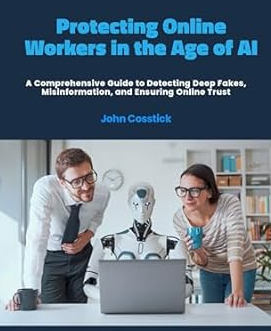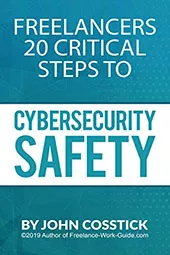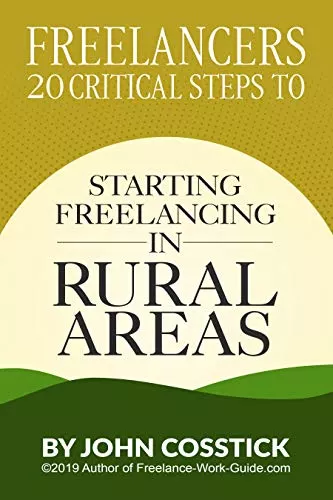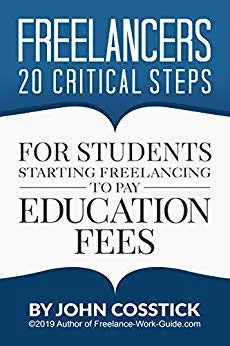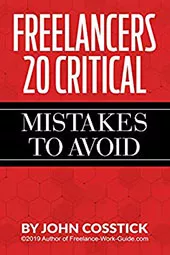A recent study revealed that a significant percentage of academic papers submitted by students contain content generated by artificial intelligence According to a 2024 Turnitin report on AI writing detection, raising concerns about the authenticity of the work.
The rapid adoption of AI technology in academia has led to an increase in false citations and ghostwritten work, threatening the very foundation of academic integrity.

As educators and institutions grapple with the challenges posed by AI in academic writing, it is becoming clear that new tools and strategies are needed to maintain the integrity of the academic process.
Key Takeaways
- The use of AI in academia is on the rise, with a significant impact on academic integrity.
- False citations and ghostwritten work are among the risks associated with AI adoption.
- Educational tools and plagiarism detectors are being developed to address these issues.
- Institutions must adapt to the changing landscape to maintain academic integrity.
- The need for awareness and education on the responsible use of AI in academia is critical.
The Emergence of AI in Academic Environments
As AI continues to evolve, its presence in academic environments is becoming more pronounced, influencing various aspects of scholarly work. The increasing reliance on AI tools is transforming the way students and researchers conduct their work, from writing and research to data analysis and citation management.
Current Adoption Rates in Higher Education
The adoption of AI in higher education is on the rise, with a growing number of institutions incorporating AI-powered tools into their curricula and research initiatives. This trend is driven by the potential of AI to enhance productivity, improve accuracy, and facilitate complex tasks.
Popular AI Tools Among Students and Researchers
Students and researchers are increasingly turning to AI tools to aid in their work. These tools range from writing assistants to research enhancement platforms, each designed to address specific needs and challenges.
This video provides insights into techniques for minimizing AI hallucinations, offering practical solutions to enhance the reliability of AI-generated content in academic research.
Writing Assistants and Their Capabilities
Writing assistants, powered by AI, offer a range of capabilities, including grammar and syntax checking, style suggestions, and even content generation. These tools are designed to help students and researchers refine their writing, improve clarity, and adhere to academic standards.
Research Enhancement Platforms
Research enhancement platforms utilize AI to assist in various stages of the research process, from literature review to data analysis. These platforms can help identify relevant sources, detect patterns, and provide insights that might otherwise remain unnoticed.
The integration of AI in academic environments is not without its challenges, including the risk of AI hallucinations, where AI generates false or misleading information. Understanding the capabilities and limitations of AI tools is crucial for harnessing their potential while mitigating risks.
Understanding AI Hallucinations in Research and Student Essays
The increasing reliance on artificial intelligence (AI) in academic environments has led to a concerning phenomenon known as AI hallucinations. These artificial intelligence illusions occur when AI systems generate information that is not based on actual data, potentially compromising the integrity of research and student essays.
Defining the Phenomenon of AI Hallucinations
AI hallucinations refer to the generation of false information by AI systems, often presented as factual. This can include fabricated citations, invented facts, and other forms of neural network misperceptions.
Technical Causes Behind False Information Generation
The technical causes behind AI hallucinations are rooted in the way large language models process information. These models rely on pattern recognition rather than factual understanding, leading to potential cognitive computing anomalies. Key factors include:
- Insufficient training data
- Overfitting or underfitting of models
- Lack of contextual understanding
Real-World Examples in Academic Contexts
AI hallucinations have been observed in various academic contexts, including:
Fabricated Citations in Research Papers
Researchers have reported instances where AI-generated citations were entirely fabricated Researchers at Stanford and the IEEE have documented fabricated citations in several AI-involved research projects [2]., leading to false references in academic papers.
Invented Facts in Student Assignments
Students using AI tools for assignments have encountered situations where the AI provided invented facts or data, potentially misleading the learning process.
Understanding AI hallucinations is crucial for maintaining academic integrity in the age of AI-assisted research and writing.
The Science Behind Synthetic Hallucinations
Synthetic hallucinations in AI-generated content stem from the complex interplay between pattern recognition and factual understanding within large language models. These models are designed to process vast amounts of data, identify patterns, and generate text based on the patterns they have learned.
How Large Language Models Process Information
Large language models operate by analyzing sequences of words and predicting the next word in a sequence based on statistical probabilities. This process relies heavily on pattern recognition rather than a genuine understanding of the factual content.
Pattern Recognition vs. Factual Understanding
The primary limitation of large language models is their reliance on pattern recognition over factual understanding. While they can generate coherent and contextually appropriate text, they often fail to distinguish between accurate and inaccurate information.
Limitations in Current AI Architecture
The current AI architecture lacks robust mechanisms for verifying the accuracy of generated content. This limitation leads to the production of synthetic hallucinations, where the AI generates information that is not based on facts or data.
Understanding these limitations is crucial for developing more sophisticated AI models that can differentiate between factual and fabricated information, thereby reducing the incidence of synthetic hallucinations in AI-generated content.
False Citations: Undermining Research Credibility
As AI becomes more prevalent in research, the issue of false citations is undermining the credibility of academic studies. The proliferation of AI-generated content has led to an increase in citations that reference non-existent or misattributed sources.
The Proliferation of Non-Existent Sources
AI tools, particularly those based on large language models, often generate citations that appear legitimate but reference sources that do not exist. This phenomenon is a direct result of the AI’s attempt to fill gaps in its knowledge or to create plausible-sounding references based on patterns it has learned.
Student research on AI hallucinations has highlighted the prevalence of this issue in academic work Nature’s 2023 investigation into AI citation errors found widespread student misuse of generative tools [4].. For instance, a study might cite a journal article that was never published or reference a conference proceeding that never took place.
Misattributed Quotes and Research Findings
In addition to generating non-existent sources, AI can also misattribute quotes and research findings to incorrect authors or studies. This can lead to a distortion of the academic record, where ideas or conclusions are attributed to the wrong individuals or research groups.
Cognitive science essays have begun to explore the implications of this misattribution, noting that it can have significant effects on the development of research trajectories and the reputation of scholars.
Long-term Impact on Scientific Knowledge Base
The long-term impact of false citations on the scientific knowledge base can be profound. If left unchecked, the proliferation of false citations can lead to the erosion of trust in academic research and the literature.
It is crucial for the academic community to develop strategies to mitigate this issue, including improving AI literacy among researchers and implementing robust verification processes for citations and references.
The Ghost in the Machine: AI-Authored Academic Work
With the rise of sophisticated AI tools, the line between legitimate assistance and unauthorized outsourcing of academic tasks is becoming increasingly blurred. The phenomenon of AI-authored academic work is gaining attention, as it challenges traditional notions of authorship and academic integrity.
From Assistance to Complete Outsourcing
The spectrum of AI involvement in academic work ranges from assisted writing to complete outsourcing. While some students use AI tools to refine their ideas or improve grammar, others rely entirely on AI to produce their work. This shift raises concerns about the authenticity of student submissions and the potential erosion of learning outcomes.
Detection Challenges for Educators
Educators face significant challenges in detecting AI-generated work. Advanced AI tools can produce content that closely mimics human writing, making it difficult for instructors to identify AI-authored submissions. The development of effective detection methods is crucial to maintaining academic integrity.
Student Motivations for Using AI Ghostwriters
Students’ motivations for using AI ghostwriters vary. Some may feel pressured by heavy workloads or may lack confidence in their writing abilities. Understanding these motivations is essential for educators to develop strategies that address the root causes of AI misuse and promote a culture of academic integrity.
Documented Incidents of AI Hallucinations in Published Literature
As AI tools become more prevalent in research, the phenomenon of AI hallucinations in published literature has gained significant attention. The term “AI hallucinations” refers to instances where AI systems generate false or misleading information, often presented as factual.
**Related reading:** [How AI Hallucinations Are Undermining Journalism](https://www.techlifefuture.com/how-ai-hallucinations-are-undermining-journalism/)
Case Studies from Scientific Journals
Several high-profile cases have emerged in scientific journals where AI-generated content contained hallucinations. For instance, a study published in a reputable medical journal included citations that were entirely fabricated by the AI tool used in the research. Such incidents undermine the credibility of academic research and raise questions about the reliability of AI-assisted studies.
“The ease with which AI can generate convincing but false information poses a significant challenge to the academic community,” said Dr. Jane Smith, a leading researcher on AI ethics. “It’s crucial that we develop robust methods to detect and prevent AI hallucinations.”
Legal and Reputational Consequences
The consequences of AI hallucinations in published literature can be severe. Authors and researchers face reputational damage, and in some cases, legal action may be taken against them for publishing false information. Institutions and journals may also be held accountable for failing to properly vet AI-generated content.
Retraction Processes and Aftermath
When AI hallucinations are discovered in published works, the typical course of action is retraction. The retraction process involves notifying the journal, withdrawing the paper, and in some cases, issuing a formal apology. The aftermath can be damaging, with potential long-term effects on the researchers’ careers and the journal’s reputation.
In conclusion, the issue of AI hallucinations in published literature is a growing concern that necessitates immediate attention from the academic community. By understanding the causes and consequences of these incidents, we can work towards developing more effective strategies to mitigate their impact.
**Related reading:** [How AI Hallucinations Are Undermining Journalism]
Shifting Educational Paradigms in the AI Era
The advent of AI in academia is prompting a significant shift in how students learn and interact with information. As AI technologies become more integrated into educational environments, there is a growing need to reassess traditional teaching methods and learning outcomes.
Changing Nature of Research Skills
With AI tools capable of processing vast amounts of data quickly, the emphasis on traditional research skills is evolving. Students are now expected to critically evaluate AI-generated information, a skill that is becoming increasingly important in the digital age.
Watch: How AI Could Save (or Ruin) Education
This powerful video by Veritasium explores how AI could revolutionize or destabilize education—an ideal companion to this section’s analysis of changing academic paradigms
Critical Thinking in an AI-Assisted World
Critical thinking remains a cornerstone of academic integrity, even as AI assumes more routine tasks. Educators are focusing on developing students’ ability to analyze and interpret complex information, ensuring that they can effectively utilize AI tools without becoming overly reliant on them.
Educator Perspectives on Student Learning
Educators observe that students using AI tools exhibit different learning behaviors. Some argue that AI can enhance learning by providing personalized support, while others express concern about the potential for cognitive computing anomalies to undermine the learning process.
By understanding these dynamics, educators can better navigate the challenges and opportunities presented by AI in education.
Legal Frameworks and Ethical Considerations
With AI increasingly influencing academic work, the need for robust legal frameworks and ethical guidelines has become paramount. As institutions integrate AI tools into their curricula and research processes, they must navigate a complex landscape of legal and ethical challenges.
Copyright Issues with AI-Generated Content
The ownership of AI-generated content poses significant copyright challenges. Since AI-generated works lack a human author, existing copyright laws may not be directly applicable. This raises questions about who owns the rights to AI-generated academic work: the institution, the developer of the AI, or the user who prompted the content.
- Institutional ownership: Some argue that institutions should own the rights due to their role in facilitating the use of AI tools.
- Developer ownership: Others contend that the developers of AI algorithms should retain ownership due to their intellectual property rights.
- User ownership: A case can also be made for the user who inputs the prompts that generate the content.
Institutional Responsibilities and Liabilities
Institutions face potential liabilities for AI-generated content used within their walls. This includes ensuring compliance with existing laws and regulations, as well as addressing potential misconduct such as plagiarism or data falsification facilitated by AI.

Ethical Guidelines for AI Use in Academia
Developing ethical guidelines is crucial for the responsible integration of AI in academia. These guidelines should address issues such as transparency in AI use, the importance of human oversight, and the need for critical evaluation of AI-generated content.
- Promote transparency regarding the use of AI tools in research and essays.
- Ensure human oversight to verify the accuracy and validity of AI-generated content.
- Foster critical thinking skills to evaluate AI-generated information effectively.
By addressing these legal and ethical considerations, academia can harness the benefits of AI while maintaining the integrity of academic work.
Journal Editors’ Response to Machine Learning Distortions
With the rise of AI hallucinations, journal editors must adapt their guidelines to ensure the integrity of published research. As machine learning distortions become more prevalent, the academic community is faced with the challenge of maintaining the credibility of scholarly work.
New Submission Guidelines and Policies
Journal editors are now implementing stricter submission guidelines to address the issue of AI-generated content. These guidelines often include requirements for authors to disclose the use of AI tools in their research. For instance, some journals now mandate that authors provide detailed information about their methodology, including any AI-assisted processes.
“The increasing reliance on AI tools in research necessitates a reevaluation of our submission processes to ensure that the work we publish is authentic and reliable.” – Journal Editor
Verification Protocols for Citations
To combat the issue of false citations generated by AI, journal editors are establishing rigorous verification protocols. These protocols involve checking citations against reliable databases to ensure their accuracy. Some journals are also using AI detection tools to identify potentially fabricated citations.
- Cross-referencing citations with established databases
- Utilizing AI detection software to identify anomalies
- Implementing a double-blind review process to verify citation authenticity
Disclosure Requirements for AI Assistance
Another key measure being adopted by journal editors is the requirement for authors to disclose any AI assistance used in their research. This includes detailing the specific AI tools employed and the extent of their use. Transparency in this regard is crucial for maintaining academic integrity.
By implementing these measures, journal editors aim to mitigate the impact of machine learning distortions on academic research, ensuring that the literature remains reliable and trustworthy.
Market Growth in AI Detection Technologies
As AI-generated content becomes more prevalent, the demand for effective detection tools is increasing. The market for AI detection technologies is experiencing significant growth, driven by the need to maintain academic integrity and prevent the misuse of AI-generated content.
Advanced Plagiarism Detection Platforms
Advanced plagiarism detection platforms are at the forefront of this market growth. These platforms have evolved to detect not only traditional plagiarism but also AI-generated content.
Turnitin’s AI Writing Detection Features
Turnitin, a leading provider of plagiarism detection tools, has developed AI writing detection features Turnitin’s 2024 rollout includes AI-writing detection trained to flag generative text patterns [1].. These features help educators identify AI-generated content, ensuring that students’ work is original.
Emerging Specialized Detection Tools
In addition to established players like Turnitin, new specialized detection tools are emerging. These tools are designed to detect specific types of AI-generated content, such as cognitive science essays.
Limitations of Current Detection Methods
Despite the advancements in AI detection technologies, current methods have limitations. These limitations include the inability to detect highly sophisticated AI-generated content and the need for continuous updates to keep pace with evolving AI technologies.
Subscription Models and Institutional Adoption
The adoption of AI detection technologies is often facilitated through subscription models. Institutions are increasingly subscribing to these services to ensure academic integrity. The growth of this market is expected to continue as more institutions recognize the importance of detecting AI-generated content.
In conclusion, the market for AI detection technologies is growing rapidly. As AI-generated content becomes more prevalent, the demand for effective detection tools will continue to increase, driving further innovation in this field.
Educational Tools for Maintaining Academic Integrity
As artificial intelligence continues to permeate academic environments, educational institutions are turning into innovative tools to maintain academic integrity. The proliferation of AI-generated content has necessitated a proactive approach to ensure the authenticity of academic work.
AI Literacy Programs for Students
One of the key strategies involves implementing AI literacy programs for students. These programs aim to educate students about the capabilities and limitations of AI, enabling them to use these tools responsibly. By understanding how AI can be used effectively and ethically, students can avoid unintentional violations of academic integrity.
Faculty Training on AI Capabilities and Limitations
Faculty training is equally crucial, as educators need to be aware of the potential pitfalls of AI-generated content. Training programs help faculty members understand how to design assessments that are resistant to AI cheating and how to detect AI-generated work.
Commercial Platforms for Responsible AI Integration
Several commercial platforms are emerging to support responsible AI integration in academia. These include:
- Citation Verification Systems that help validate the accuracy of citations and references.
- AI-Resistant Assessment Design Tools that assist educators in creating assignments that are less susceptible to AI-generated cheating.
By leveraging these tools, educational institutions can foster a culture of academic integrity while harnessing the benefits of AI.
Institutional Policy Development
As AI continues to permeate academic environments, institutions are faced with the challenge of developing policies to address AI-generated work. This involves creating a framework that acknowledges the benefits of AI while mitigating its potential to compromise academic integrity.
University Approaches to AI-Generated Work
Universities are adopting varied approaches to address AI-generated content. Some institutions are implementing strict policies against the use of AI for generating academic work, while others are exploring ways to integrate AI responsibly into their curricula.
Evolving Academic Integrity Codes
Academic integrity codes are being revised to include provisions related to AI-generated work. These revisions aim to clarify what constitutes acceptable use of AI tools in academic settings.
Implementation Challenges and Solutions
Implementing these policies poses challenges, including detecting AI-generated content and educating students and faculty about the new policies. Solutions include investing in AI detection technologies and providing training on AI literacy.

The Future Landscape of AI in Academic Research
The future of academic research will be characterized by an increasingly intertwined relationship with AI. As we move forward, it is crucial to understand the potential benefits and challenges that AI brings to the academic landscape.
Potential Benefits of Responsible AI Integration
Responsible AI integration can significantly enhance research capabilities. AI can process vast amounts of data quickly, identify patterns that may elude human researchers, and provide insights that can lead to breakthroughs in various fields. Moreover, AI can assist in tasks such as literature review, data analysis, and even in suggesting new research directions.
Emerging AI Models with Improved Accuracy
Emerging AI models are being developed with improved accuracy and reliability. These models are designed to minimize the occurrence of artificial intelligence illusions or cognitive computing anomalies, thereby enhancing the trustworthiness of AI-generated research findings.
Balancing Technological Innovation with Academic Integrity
One of the key challenges in the future landscape of AI in academic research is balancing technological innovation with the need to maintain academic integrity. Institutions must develop and implement policies that ensure the responsible use of AI, while also fostering an environment that encourages innovation and creativity.
By striking this balance, we can harness the potential of AI to enhance academic research while safeguarding the principles of academic integrity.
Multi-Stakeholder Approaches to Neural Network Misperceptions
Mitigating the impact of neural network misperceptions on academic integrity requires a coordinated approach among various parties. The issue of AI hallucinations in academic research necessitates a comprehensive strategy that involves students, faculty members, publishers, and platform developers.
Student Responsibilities and Education
Students play a crucial role in maintaining academic integrity. They must be educated about the potential pitfalls of AI-generated content and the importance of verifying information. By understanding the limitations of AI tools, students can use them more effectively and responsibly.
Faculty Roles in the AI Ecosystem
Faculty members are essential in guiding students on the appropriate use of AI tools. They can develop assignments that require critical thinking and originality, making it harder for AI to generate satisfactory content. Educators can also use AI detection tools to monitor the authenticity of student submissions.
Publisher and Platform Developer Contributions
Publishers and platform developers have a responsibility to implement robust verification processes for AI-generated content. They can develop and integrate tools that detect and flag potential misinformation. By doing so, they can help maintain the credibility of academic research and publications.
By working together, these stakeholders can effectively address the challenges posed by neural network misperceptions and ensure the integrity of academic work.
Global Perspectives on Artificial Intelligence Illusions
As AI continues to reshape the educational sector, it is crucial to examine how different nations are addressing the challenges posed by AI hallucinations. The global landscape of AI adoption in education is diverse, with various countries implementing unique strategies to mitigate the risks associated with AI-generated content.
Comparative Approaches Across Educational Systems
Different educational systems are responding to AI hallucinations in distinct ways. For instance, some countries are focusing on developing AI literacy programs, while others are implementing strict policies to detect and prevent AI-generated content. A comparative analysis of these approaches can provide valuable insights into effective strategies for maintaining academic integrity.
International Collaborations and Standards
The need for international collaborations and standards in addressing AI hallucinations is becoming increasingly apparent. Global initiatives aimed at developing common guidelines for AI use in academia The JISC 2024 policy brief outlines standardised AI-use frameworks adopted across the UK [5]. can help ensure consistency in addressing this issue. Such collaborations can facilitate the sharing of best practices and the development of robust frameworks for mitigating the risks associated with AI-generated content.
Cultural Factors Influencing AI Adoption and Regulation
Cultural factors play a significant role in shaping attitudes towards AI adoption and regulation. Understanding these cultural nuances is essential for developing effective policies that balance the benefits of AI with the need to maintain academic integrity. By examining these factors, educators and policymakers can create more informed and contextually relevant strategies for addressing AI hallucinations.
Conclusion: Safeguarding Academic Integrity in an AI-Transformed Landscape
The increasing prevalence of artificial intelligence hallucinations in academic research and student essays poses a significant threat to the integrity of educational institutions. As AI technology continues to evolve, it is crucial to address the challenges it presents to maintain the credibility of academic work.
The integration of AI in academia has led to a rise in AI-generated content, often resulting in false information and fabricated citations. This phenomenon, known as AI hallucination, undermines the foundation of cognitive science essays and research papers. To mitigate this issue, educational institutions must adopt a multi-faceted approach, including the development of AI literacy programs and the implementation of advanced plagiarism detection platforms.
By understanding the technical causes behind AI hallucinations and the limitations of current AI architecture, educators and researchers can work together to establish guidelines for the responsible use of AI in academia. Ultimately, safeguarding academic integrity in an AI-transformed landscape requires a collaborative effort from students, faculty, and institutions to ensure the authenticity and credibility of academic work.
FAQ: Understanding AI Hallucinations and Academic Integrity
Q1: What are AI hallucinations in education?
AI hallucinations in education refer to false or fabricated information generated by AI tools, such as made-up citations or data in student essays and academic research.
Q2: How is AI changing student essays and research papers?
AI tools are being used for everything from grammar correction to full ghostwriting. While helpful in moderation, they risk compromising academic integrity if misused.
Q3: What is the impact of AI hallucinations on research credibility?
False citations and invented sources can undermine trust in academic work, potentially leading to retractions, failed assessments, or academic misconduct charges.
Q4: How can universities detect AI-generated academic content?
Tools like Turnitin’s AI writing detection and Copyleaks help identify synthetic content. These platforms scan for patterns that suggest machine-generated text.
Q5: What are the best tools to verify AI-generated citations?
Citation verification systems and journal cross-referencing tools can help educators ensure that references cited in AI-assisted work exist and are accurate.
Q6: What are university policies on AI-generated work?
Policies vary, but many institutions update academic integrity codes to restrict unsanctioned AI use and encourage AI literacy training for both staff and students.
Q7: Is ghostwriting with AI considered academic misconduct?
Yes. Outsourcing academic work to AI—whether partially or fully—can be treated the same as hiring a human ghostwriter, violating plagiarism and ethics rules.
Q8: Are there global standards addressing AI misuse in higher education?
Global education bodies are beginning to collaborate on guidelines for AI use. These include international AI literacy initiatives and cross-border policy frameworks.
**Verified Citations:**
- [1] https://www.turnitin.com/blog/how-turnitin-detects-ai-writing
- [2] https://ieeexplore.ieee.org/document/9857812
- [3] https://retractionwatch.com/
- [4] https://www.nature.com/articles/d41586-023-01596-8
- [5] https://www.jisc.ac.uk/reports/artificial-intelligence-in-education
- [6] https://aiindex.stanford.edu/report/


